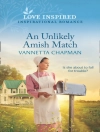“…all Ladies should carry about with them [this almanack], as the Priest his Breviary, as the Cook his Recipes, as the Doctor his Physic, as the Bride her Fears, and as the Lion his Roar!”
Unquestionably unique in its execution of narrative, Djuna Barnes’ The Ladies Almanack is an experimental roman à clef that intertwines fiction, myth, and parody into one of the boldest pieces of lesbian literature published in the twentieth century.
Privately printed and distributed by Barnes herself, the novel is considered by many to be the love letter—and inside joke—to the lesbian community that flourished in the literary salon of American writer, Natalie Clifford Barney; with many in the circle appearing pseudonymously within the text.
Confounding both critics and readers alike for almost a century, The Ladies Almanack is an unabashedly puzzling book that exists on its own terms; unapologetically delighting its first audience, confusing it’s expanded audience, and celebrating all that lesbianism was and can be.
Since our inception in 2020, Mint Editions has kept sustainability and innovation at the forefront of our mission. Each and every Mint Edition title gets a fresh, professionally typeset manuscript and a dazzling new cover, all while maintaining the integrity of the original book.
With thousands of titles in our collection, we aim to spotlight diverse public domain works to help them find modern audiences. Mint Editions celebrates a breadth of literary works, curated from both canonical and overlooked classics from writers around the globe.
Про автора
Djuna Barnes (1892—1982) was an American novelist, illustrator, and journalist. Born in a log cabin on Storm King Mountain in New York, Barnes was raised in a prominent family of artists, musicians, and writers. Her father Wald was an advocate of polygamy but showed little interest in providing for his eight children by two women. In 1912, Djuna escaped to New York City with her mother and three brothers and began attending the Pratt Institute and the Art Student’s League of New York until 1916. She then found work as a freelance writer for the Brooklyn Daily Eagle, the New York Press, and The World—among other leading journals and newspapers—publishing interviews, fiction, drawings, and features. She gained notoriety for a piece documenting her experience being force-fed, which she hoped would shed light on the cause of suffragists on hunger strike around the globe. She later used her art world connections to fund a literary career of her own, gaining notoriety for Nightwood (1936) a cult classic lesbian novel and a pioneering work of modernist fiction. Beginning in 1921, she lived for fifteen years in Paris as a correspondent for Mc Call’s. A Book (1923), a major work from this era, is a celebrated collection of poems, plays, illustrations, and short stories that showcases her wide-ranging talent as an artist.












